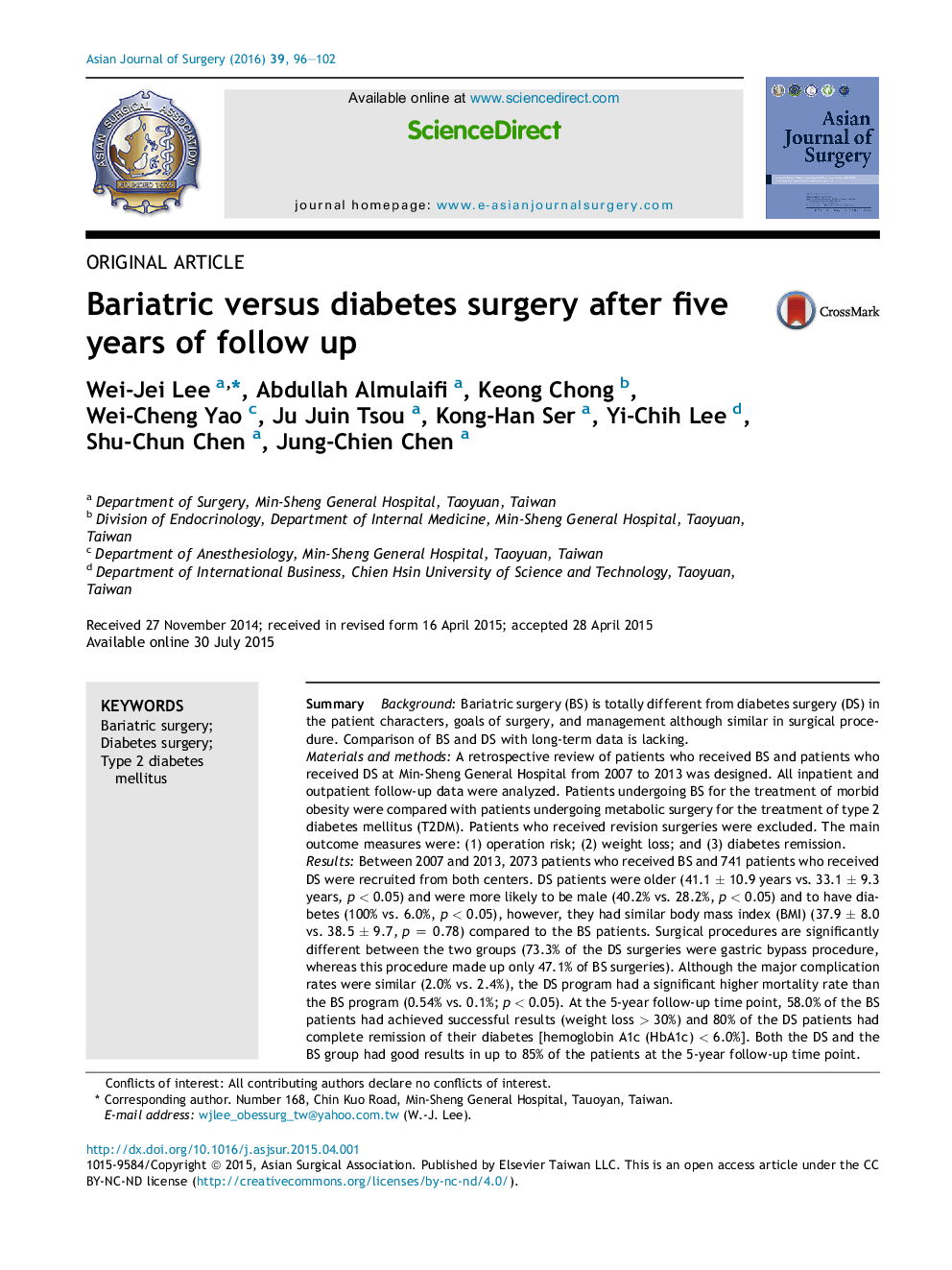| Article ID | Journal | Published Year | Pages | File Type |
|---|---|---|---|---|
| 4282577 | Asian Journal of Surgery | 2016 | 7 Pages |
SummaryBackgroundBariatric surgery (BS) is totally different from diabetes surgery (DS) in the patient characters, goals of surgery, and management although similar in surgical procedure. Comparison of BS and DS with long-term data is lacking.Materials and methodsA retrospective review of patients who received BS and patients who received DS at Min-Sheng General Hospital from 2007 to 2013 was designed. All inpatient and outpatient follow-up data were analyzed. Patients undergoing BS for the treatment of morbid obesity were compared with patients undergoing metabolic surgery for the treatment of type 2 diabetes mellitus (T2DM). Patients who received revision surgeries were excluded. The main outcome measures were: (1) operation risk; (2) weight loss; and (3) diabetes remission.ResultsBetween 2007 and 2013, 2073 patients who received BS and 741 patients who received DS were recruited from both centers. DS patients were older (41.1 ± 10.9 years vs. 33.1 ± 9.3 years, p < 0.05) and were more likely to be male (40.2% vs. 28.2%, p < 0.05) and to have diabetes (100% vs. 6.0%, p < 0.05), however, they had similar body mass index (BMI) (37.9 ± 8.0 vs. 38.5 ± 9.7, p = 0.78) compared to the BS patients. Surgical procedures are significantly different between the two groups (73.3% of the DS surgeries were gastric bypass procedure, whereas this procedure made up only 47.1% of BS surgeries). Although the major complication rates were similar (2.0% vs. 2.4%), the DS program had a significant higher mortality rate than the BS program (0.54% vs. 0.1%; p < 0.05). At the 5-year follow-up time point, 58.0% of the BS patients had achieved successful results (weight loss > 30%) and 80% of the DS patients had complete remission of their diabetes [hemoglobin A1c (HbA1c) < 6.0%]. Both the DS and the BS group had good results in up to 85% of the patients at the 5-year follow-up time point.ConclusionThe clinical profiles were very different between the BS and the DS programs. Both programs achieved the desired outcomes equally well, however, the DS program had a higher risk than the BS program.
